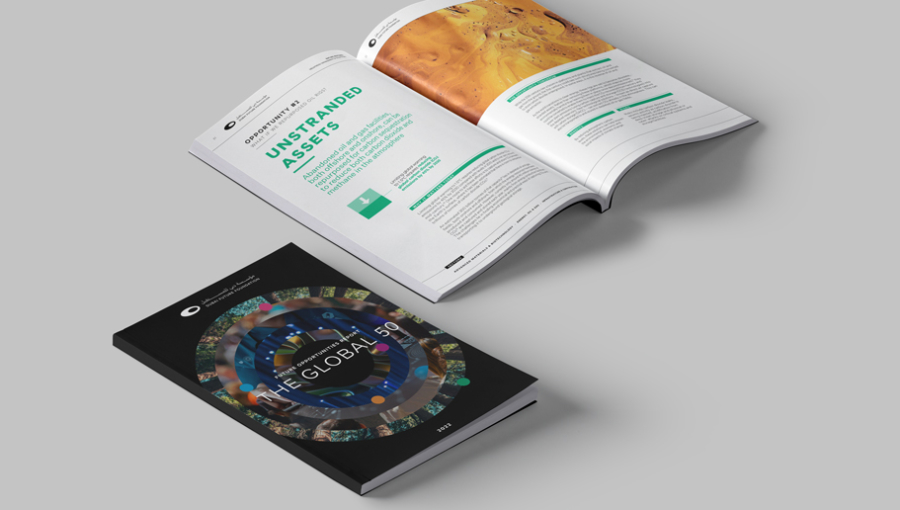The Dubai Future Foundation (DFF) launched the “Future Opportunities Report: The Global 50” that highlights the most promising opportunities in various vital and future sectors in the next fifty years.
The report will introduce decision-makers in both public and private sectors, thought leaders, innovators, researchers, entrepreneurs and the people in the UAE and worldwide to the most prominent major trends of the future. This will help decision-makers to develop strategies and plans, and contribute to launching a global dialogue to identify positive transformations to serve humanity and build a better future.
The report outlines 50 global opportunities classified within five main pillars: nature and sustainability, enabling societies, health, human relation with technology, and future innovations.
Mohammad bin Abdullah Al Gergawi, Minister of Cabinet Affairs, Vice Chairman of the Board of Trustees and Managing Director of Dubai Future Foundation, said, “The next 50 years will witness more changes in human scientific, economic and social achievement than ever before. These transformations will be transcontinental in nature and affect people and societies everywhere, impacting all aspects of our lives, from work to relationships. Intentional thinking will help us adapt and prepare for these changes. The future is not ours to await; it is ours to create. Likewise, those who understand and plan for future transformations are best placed to design and control the path ahead of us all.”
5 Main Pillars The nature and sustainability pillar include seven opportunities that focus on employing the development of technology and biomaterials to reduce the volume of plastic waste, storing harmful gases in depleted onshore and offshore oil and gas fields, modifying types of materials, trees and plants to contribute to achieving zero carbon emissions, and greening deserts. It aims to increase habitable areas, protect the oceans and their ecosystems and fisheries, and rely on renewable and sustainable energy sources that are safe, cheap and low in emissions.
Enabling Societies The second pillar includes 11 global opportunities that consist of the government role in developing legislations, achieving individual needs, ensuring the safety and privacy of personal data, launching a global charter for genetic engineering and genomics applications, setting a framework that defines the rights of robots in complementarity with human rights, providing electric power to all societies and reducing its costs, and assist countries in facing the effects of the climate change. In addition, it also employs modern technology in the development of the educational system, enhancing levels of happiness and enabling talents to innovate.
Health Opportunities This third pillar consists of seven main global opportunities represented in employing technologies to identify mental and psychological health problems, use non-surgical monitoring techniques to produce medicines on demand, personalise treatments, and enhance data exchange mechanisms to increase healthcare efficiency and research rare diseases and epidemics globally.
Human Relationship With Technology This pillar includes 13 primary opportunities, focusing on providing access to the virtual world without needing devices, moving to the concept of comprehensive and rapid manufacturing, accelerating international shipping, and employing smart machines and technologies to enhance governance and decision-making mechanisms. The human relationship with technology will also focus on integrating software solutions to increase the efficiency of work from anywhere in the world, and cloning memory and knowledge from the human brain and storing it to serve individuals and society.
Future Innovations This pillar includes many global opportunities associated with innovation in the use of new technologies, reliance on biological materials instead of products and chemicals, providing sustainable water resources, and developing international standards for the total cost and actual value of all economic activities and their social environmental impacts. In addition, is the adoption of the concept of carbon credits, the transition of commercial and social activities to virtual reality, and the availability of data for all to benefit from in developing vital sectors.
The report identifies ten major trends, including the development in sciences of biological and synthetic materials, the decrease in the cost of data and the focus on the quality of analysing it, the increase in the security vulnerabilities in systems and infrastructure, the development of technologies for generation and storage of electric energy, the rise in investment in ecosystems management, the need to develop legislation and mechanisms for international disputes, the growth of virtual and digital world applications, the reach of autonomous robots, the need to redefine humanitarian goals in light of the spread of artificial intelligence and advanced technology, and the development of innovative health and agricultural technologies.
